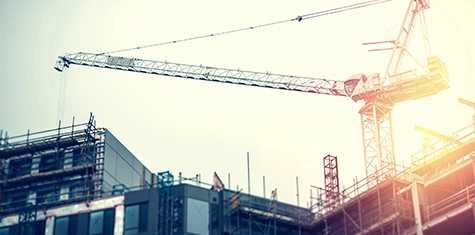Over the next five years, $1.2 trillion in federal funds will flow into thousands of infrastructure-related projects throughout the nation thanks to the 2021 Infrastructure Investment and Jobs Act, also known as the Bipartisan Infrastructure Law (BIL). Contractors in construction, architecture, engineering and design are anxious to identify opportunities to participate in funded infrastructure projects, but it could take months or even years before they see BIL-funded project RFPs. In the meantime, savvy contractors can position themselves to win future projects by defining which types of funded projects are most likely to offer contracting opportunities and then following the flow of federal money into those projects. With finite time and resources, companies hunting for BIL projects will need to prioritize their time and attention.
1. Which Types of Projects Will Receive Funding?
BIL includes funds for just about every imaginable type of infrastructure-related project, with the most significant funding allocated to transportation, clean energy and power, water and broadband projects. BIL created 120 new federal programs and enhanced funding for over 230 existing federal programs, which are managed by 12 federal agencies.
Transportation
More than $400 billion will be dedicated to improving roads, bridges, passenger and freight rail, public transportation, airports, ports and waterways; building an electric vehicle charging network; and transitioning to electric vehicles, buses and ferries. The bulk of transportation funds will flow through the US Department of Transportation (DOT) and its many sub-agencies.
Clean Energy and Power
Clean energy and power priorities include clean electricity, a civil nuclear credit program, energy efficiency and weatherization retrofits for homes, buildings and communities, clean energy manufacturing and workforce development, and clean energy demonstration projects for innovative technologies. Over $58 billion will flow through the DOE, DHS and US Department of Agriculture (USDA).
Water Infrastructure
Water projects will include drinking water and other clean water infrastructure projects, including lead service line replacement, efforts to address PFAS and emerging contaminants, and water issues facing Western states and Indian nations. Water projects will receive $55 billion, primarily through the EPA, Department of Interior (DOI) and Indian Health Service (IHS).
Broadband
Broadband funding will go toward planning and deployment of broadband, including construction, improvement and acquisition of related facilities and subsidies for consumers, totaling $65 billion, which will flow through the National Telecommunications and Information Administration (NTIA), the Federal Communications Commission (FCC) and the USDA Rural Utilities Services (RUS).
Additional Opportunities
Funding will also be available for additional projects including, Brownfield and Superfund remediation, pipeline repair, reclamation of abandoned mines, capping orphaned oil and gas wells, cybersecurity for infrastructure, wildfire protection, wildlife restoration and flood mitigation.
Priority to Projects that Benefit Disadvantaged Communities
Cutting across all project categories is the Biden Administration’s Justice40 initiative, under which federal agencies committed to ensuring that 40 percent of all “climate and clean infrastructure” projects receiving federal funds benefit disadvantaged communities, defined as communities that are marginalized, underserved and overburdened by pollution. The US Council on Environmental Quality recently launched a Climate and Economic Justice Screening Tool, which federal agencies will use to identify disadvantaged communities when selecting projects and setting priorities.
2. Who Can Propose Projects?
Each program defines which types of entities are eligible to receive funding, and proposals for funding must be submitted by “eligible entities,” which in most cases will be limited to state or local public entities. Although private companies will rarely be direct recipients of BIL funds, they will perform the bulk of the work needed to build the projects. As a result, contractors must wait until projects are funded and the project owner issues an RFP for design and construction services.
3. Where Is the Money Now and How Will the Money Get to Projects?
Most of the $1.2 trillion pot of federal infrastructure funds will flow from federal agency program budgets into state agency program budgets, before eventually reaching specific project budgets. Despite federal efforts to expedite this step, spending federal funds is an exceptionally slow process because federal agency staff must follow complex regulations and program-specific rules. For new programs that don’t have established rules, the spending timeline will be even more prolonged.
There are three primary methods federal agencies will use to distribute funds under BIL: block grants, competitive grants and direct federal contracts.
Block Grants
The bulk of BIL funding will be disbursed directly to states and tribes in the form of “block grants,” which are based on formulas that aim to distribute the funds fairly among the states. States incorporate block grant funds into their own programs, frequently adding state matching funds, and then run competitive grant programs to solicit project proposals. State agency staff decide which projects are funded and must follow federal and state law when spending block grant program funds.
Competitive Grants
Federal agencies will spend at least $120 billion through competitive grants, under which federal agency staff will solicit project proposals and decide which projects are funded. Many of the competitive grant programs are new, requiring development of rules and guidelines before project proposals are solicited by the agencies.
Direct Federal Contracts
An estimated $125 billion will be spent through traditional federal procurement contracts between a federal agency and prime contractor. Examples include $5 billion for federal airport capital improvements, $9 billion of water-related infrastructure projects, $3.5 billion for Superfund remediation and $3.5 billion for land ports of entry projects.
4. How Can I Track the Programs that Interest Me and Identify Funded Projects?
After identifying a program of interest to your company and defining which federal agency manages the program, you can track program funding on program-specific webpages managed by the federal agency. These pages provide up-to-date information about specific individual programs, including application requirements, deadlines and announcements of project awards.
For instance, the Federal Highway Administration Infrastructure Act page offers detailed information about the new Bridge Program Fund, explains how the Bridge Program Funds are apportioned among states and tribes, and outlines preliminary guidance on the program.
Block grant programs can be tracked on state agency webpages as well. Existing state program websites are easy to locate, but, as of this writing, state websites for new programs are sparse. For instance, because it is an existing program, Minnesota’s Drinking Water State Revolving Loan Fund website is well-established but does not include information about the new Lead Service Lines Replacement sub-program, because EPA has yet to issue federal guidance.
5. Where Will I Find RFPs for Construction and Design Services for Funded Projects?
Once projects receive funding, owners of individual projects will issue RFPs for construction and design services. Project owners will primarily be federal, state, Tribal or local agencies, but will also include most other types of organizations, including non-profit corporations, private businesses, universities, and utilities. As a result of the wide range of project owners, RFPs for BIL projects will be on countless public bidding lists. Lower-tier subcontractors will want to pay attention to which companies are awarded prime contracts and watch for those primes to issue RFPs.
6. Do I Really Have to Wait Until RFPs for Awarded Projects Start Rolling Out? Can I Get Involved in Designing/Pitching Projects for Funding?
Companies interested in working on BIL-funded projects are wise to focus on relationship building efforts with the entities that are most likely to own funded projects. Companies can help potential customers connect the dots. If you know a public entity wants to solve an infrastructure problem and you know there is BIL program that can fund the solution, you can help eligible grantees identify opportunities. Note, however, that if you want to preserve the opportunity to bid on future work, you must abide by conflict-of-interest rules, which are similar, but not identical, across federal, state and local governments.
Conclusion
Attorneys in the Government Contracts & Grants Group at Fredrikson are closely tracking BIL-funded programs, including the evolving federal and state regulations that will guide and govern spending decisions. Our team regularly helps construction, architecture, engineering and design firms pursue, negotiate, comply with and resolve disputes related to government-funded infrastructure projects. We welcome the opportunity to help your company navigate and thrive in the complex waters of government projects.





